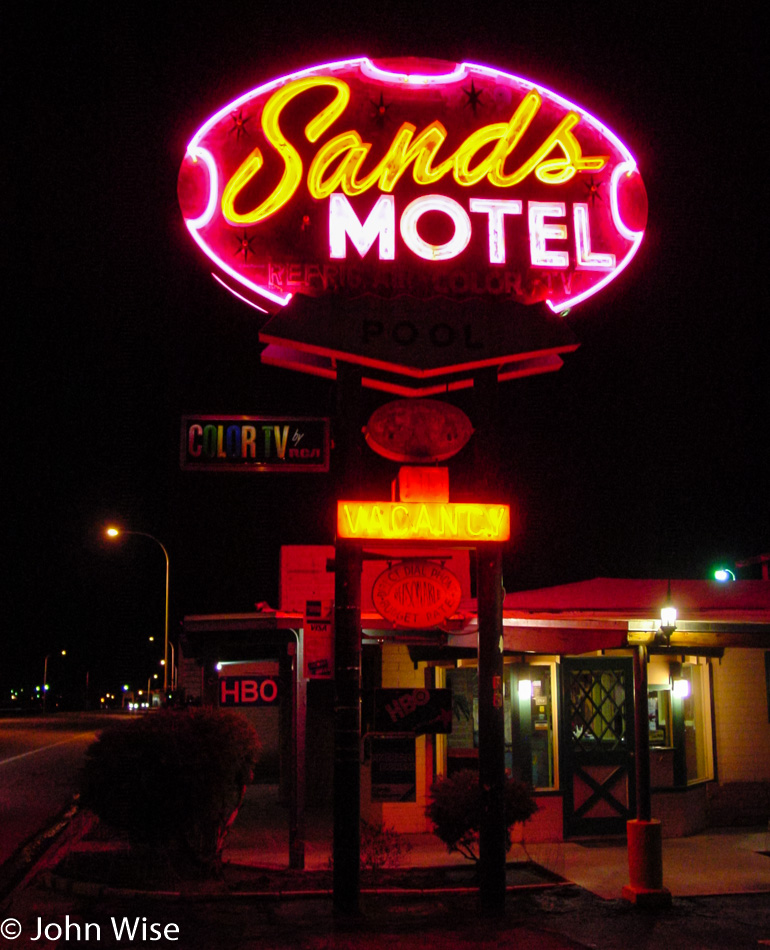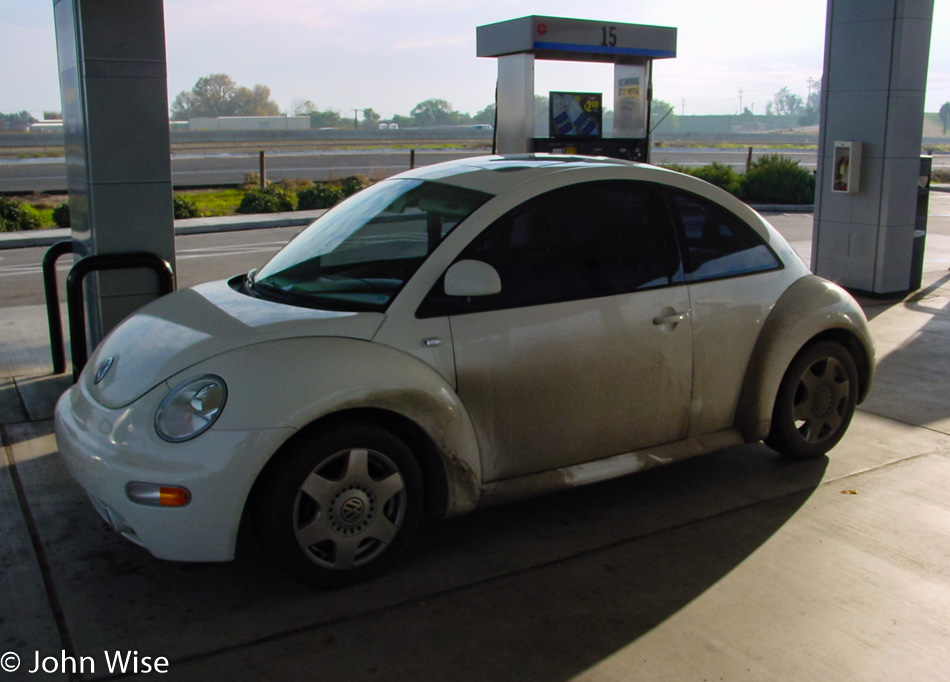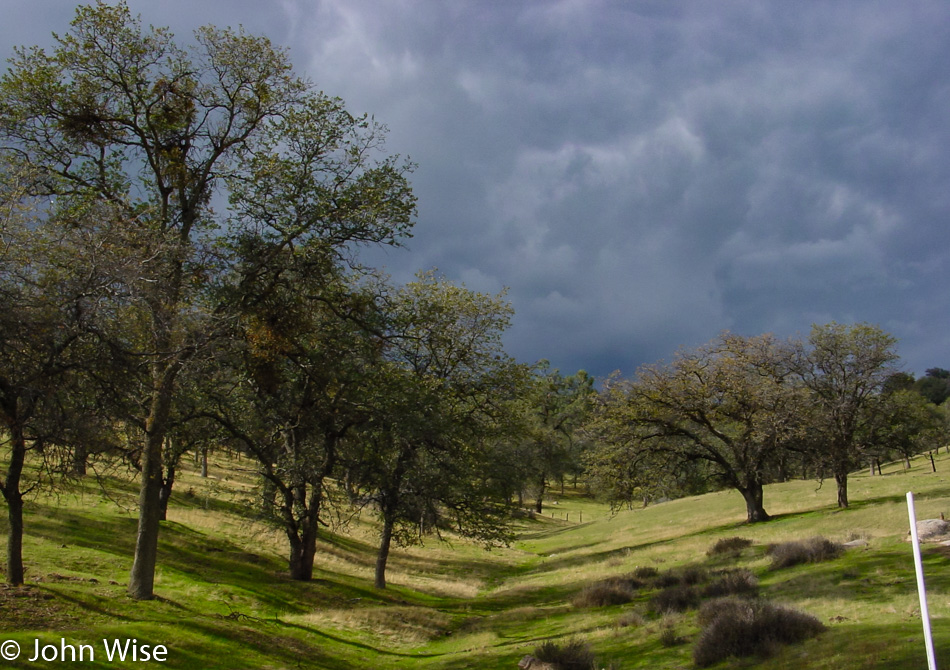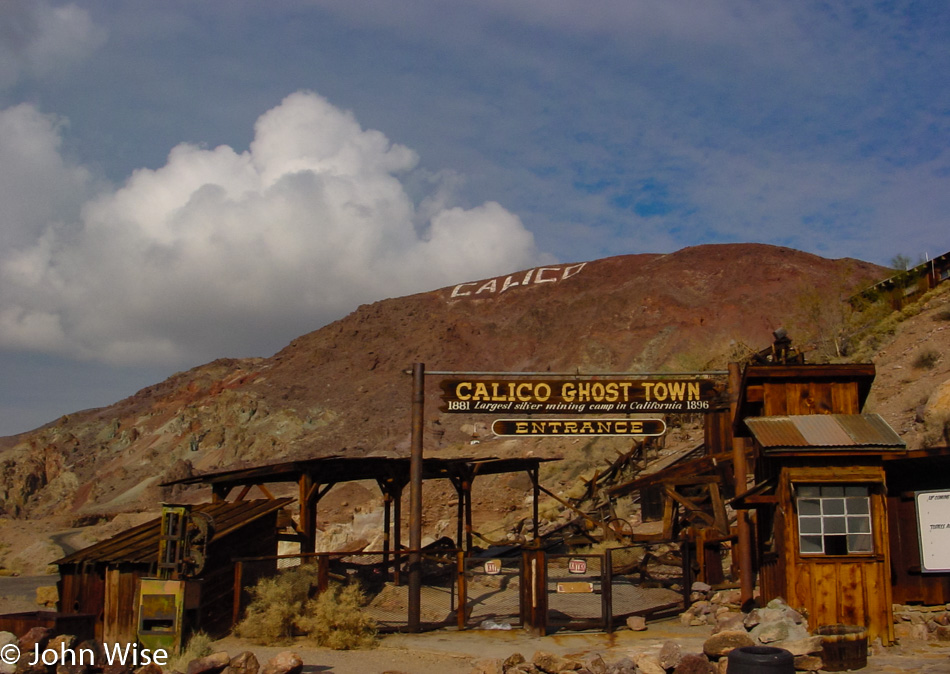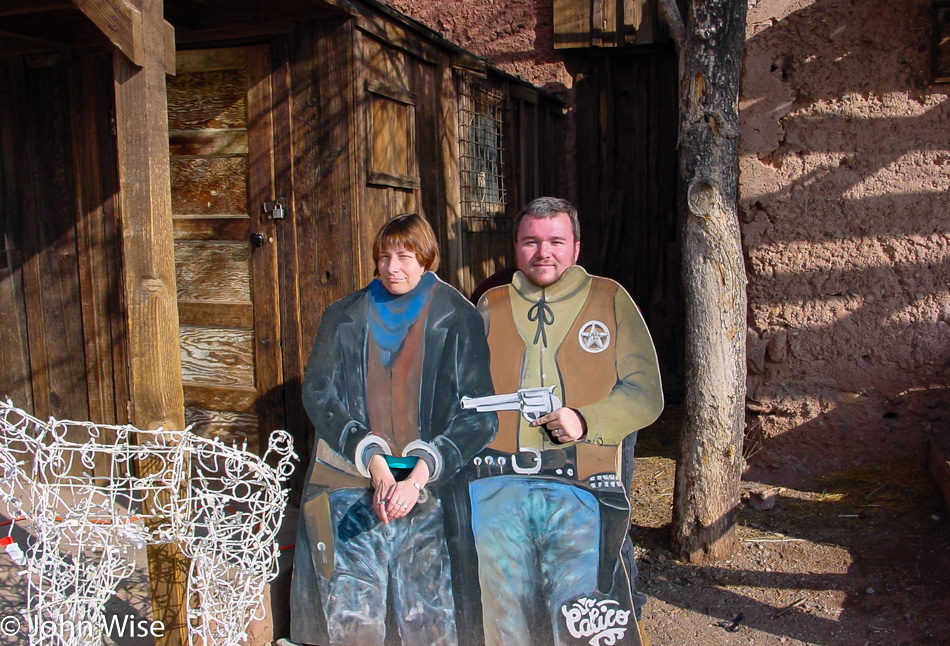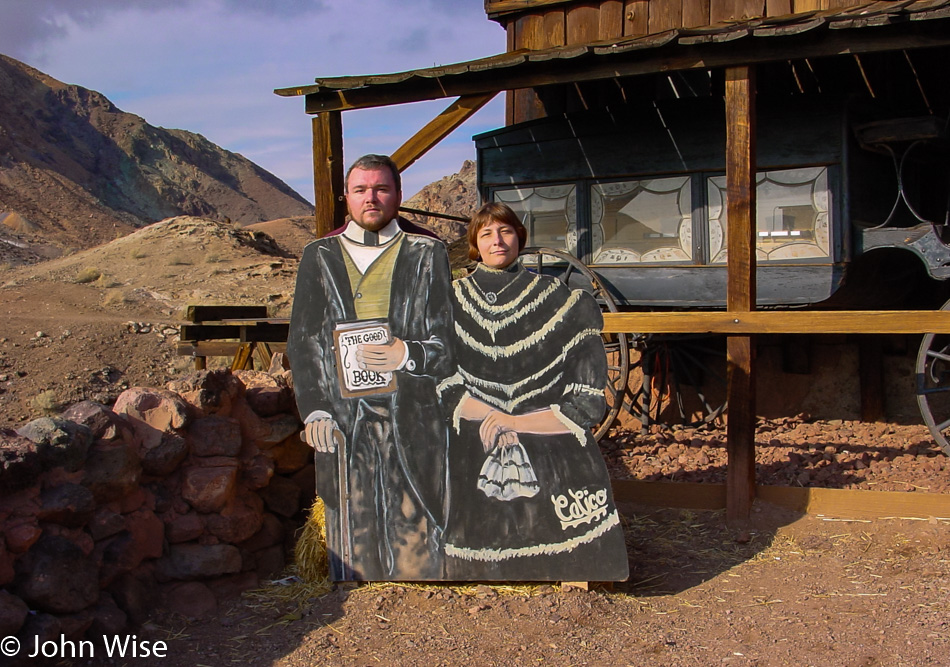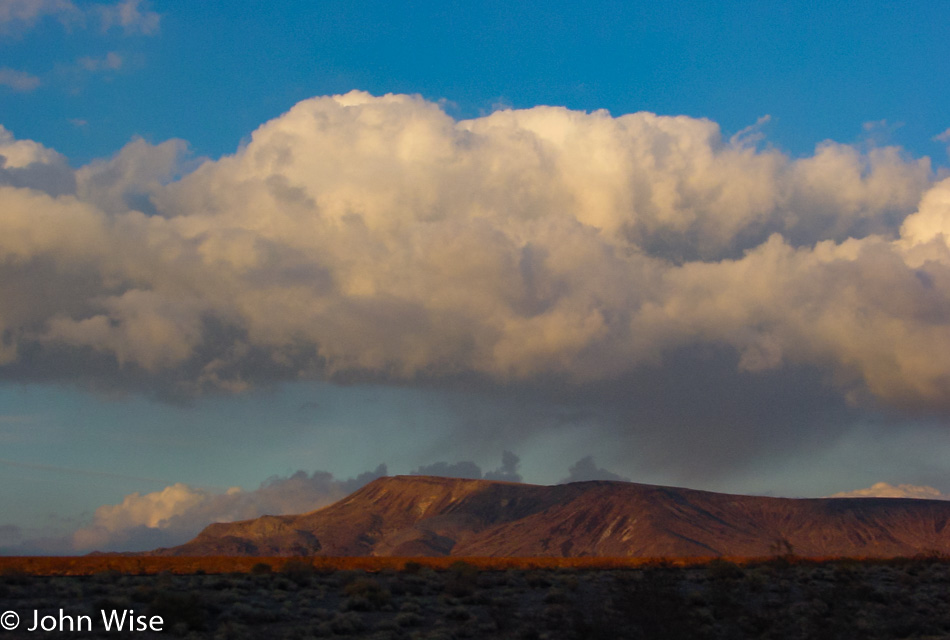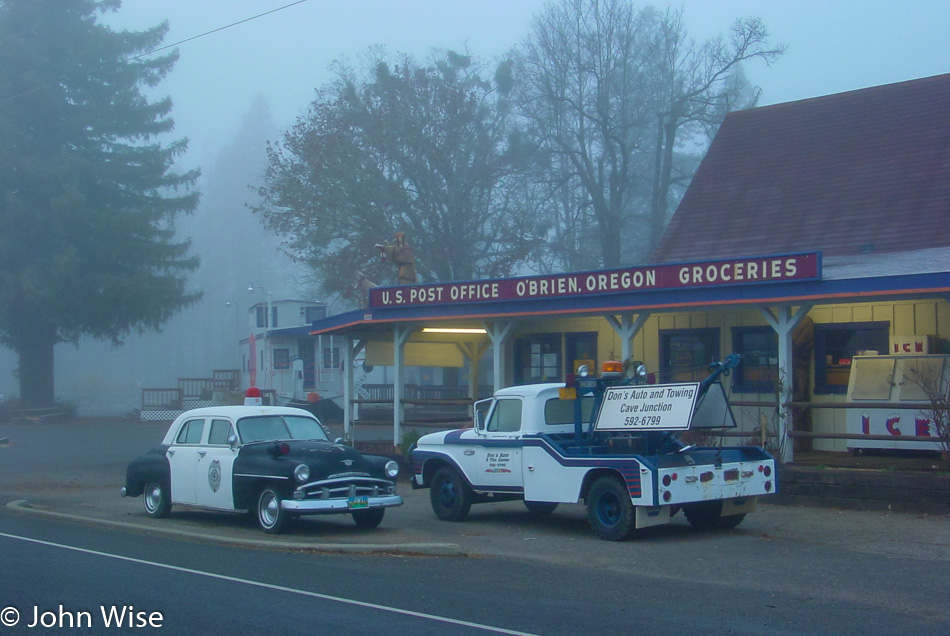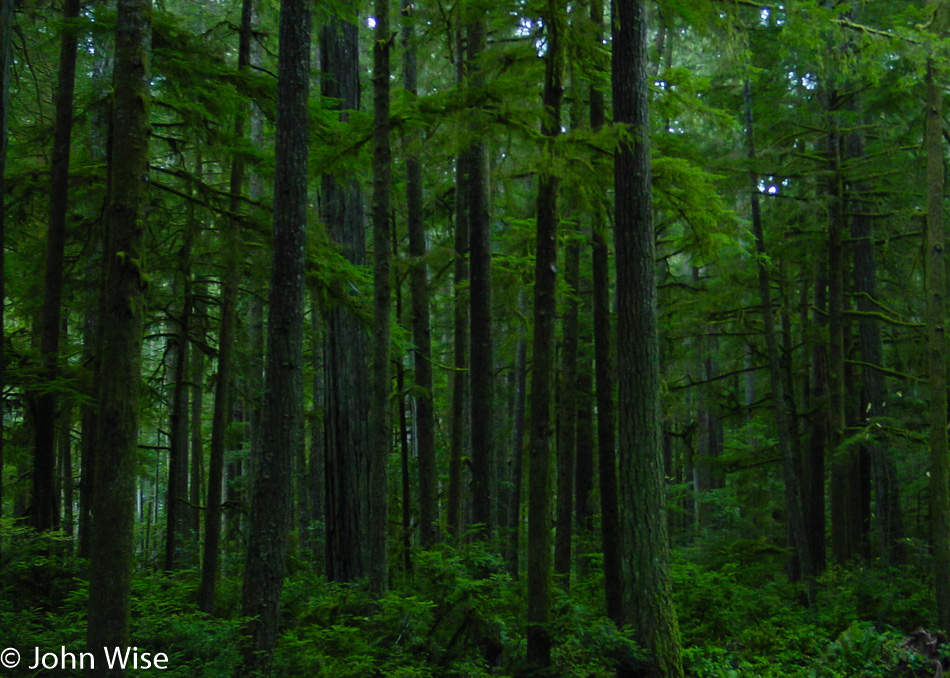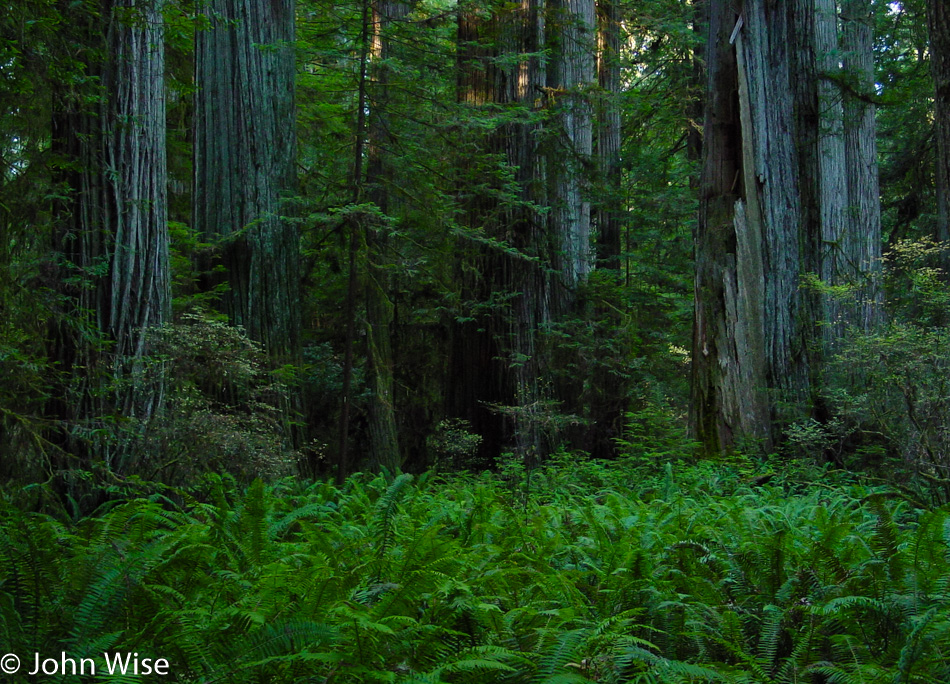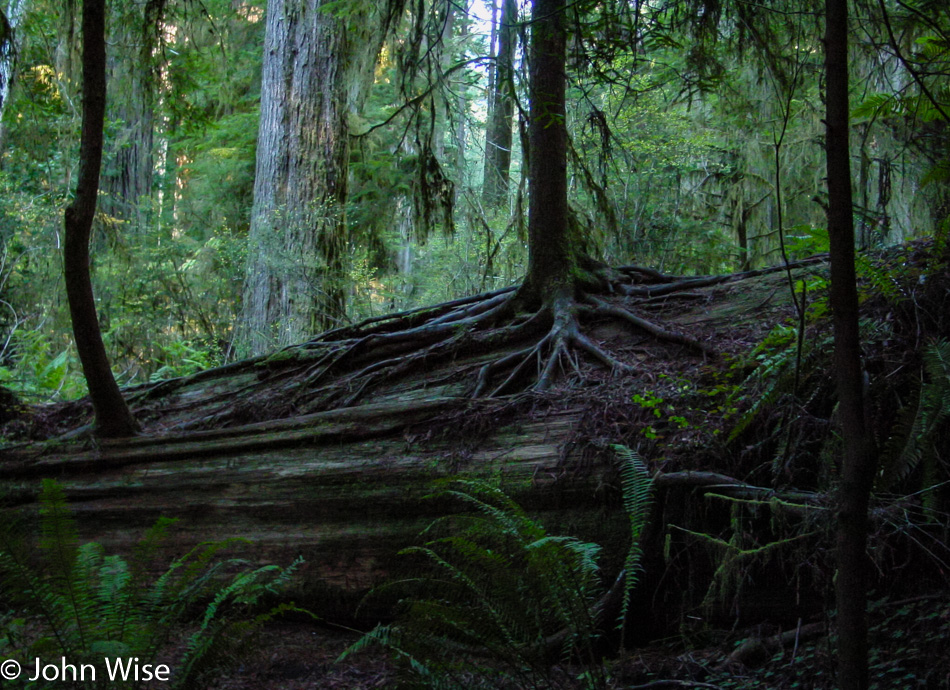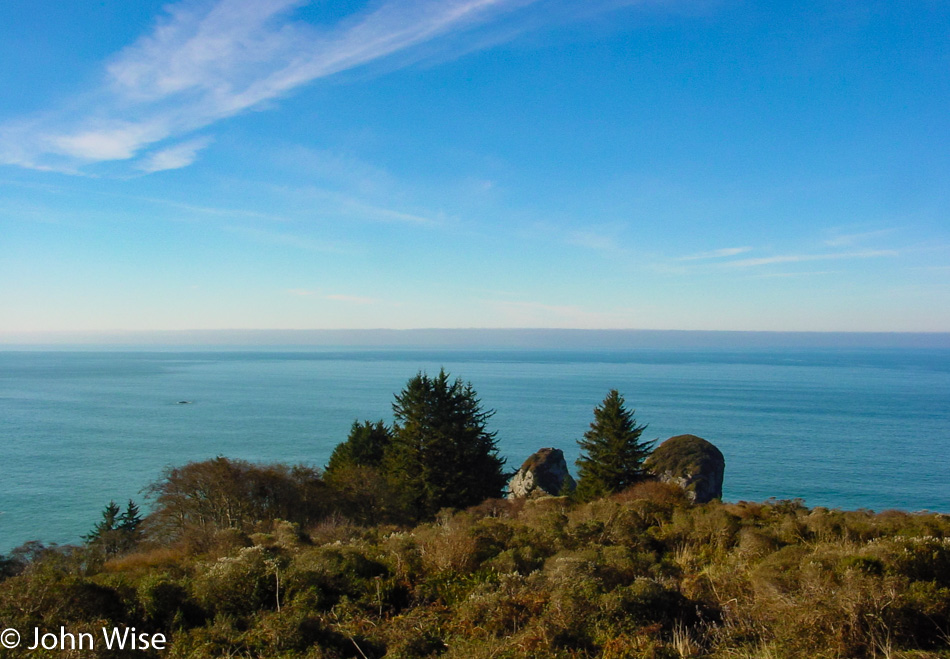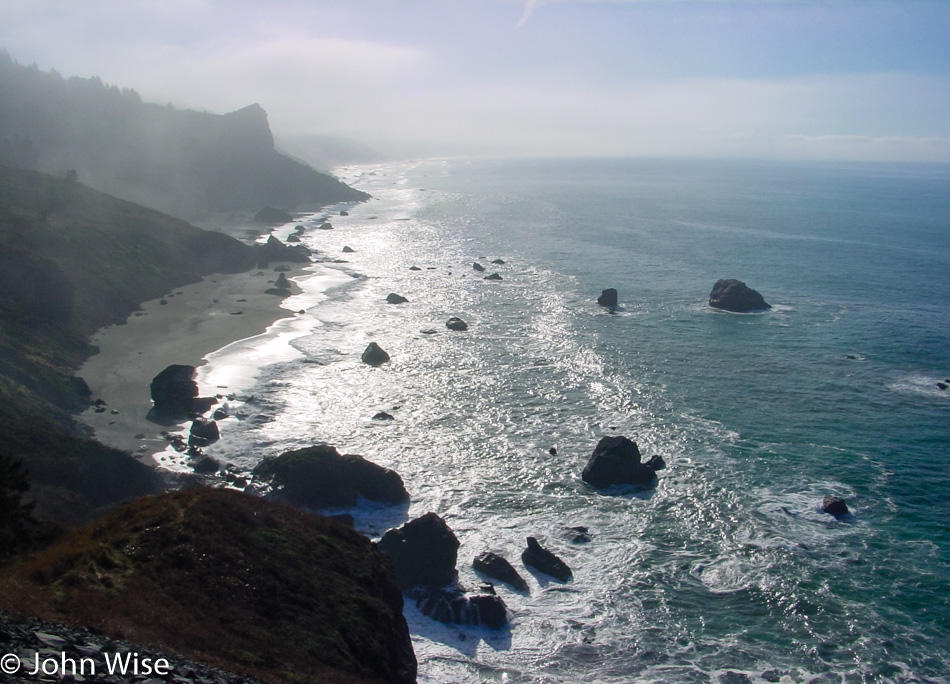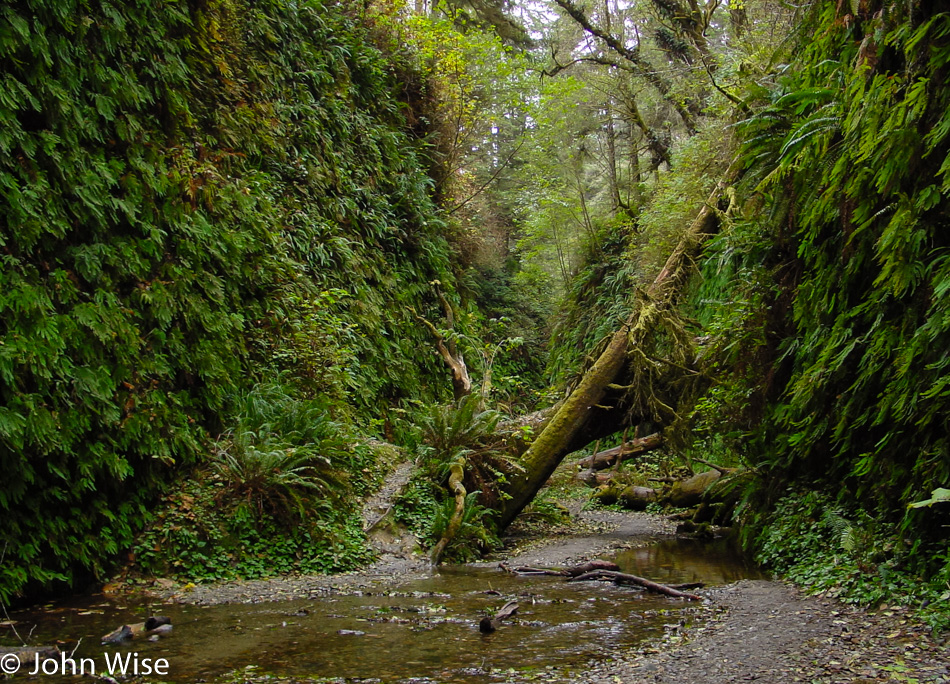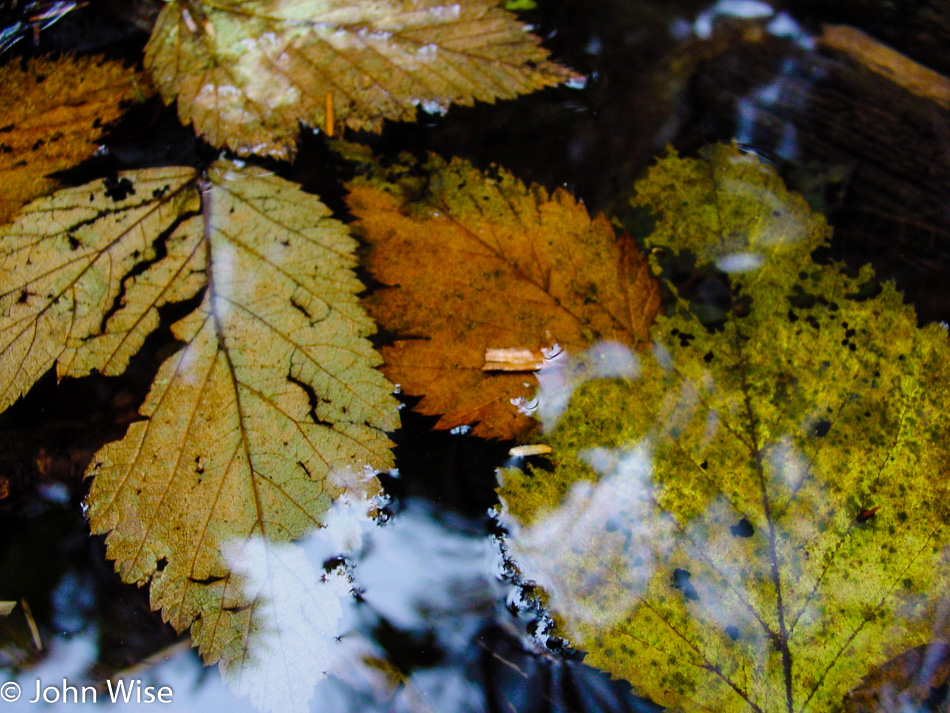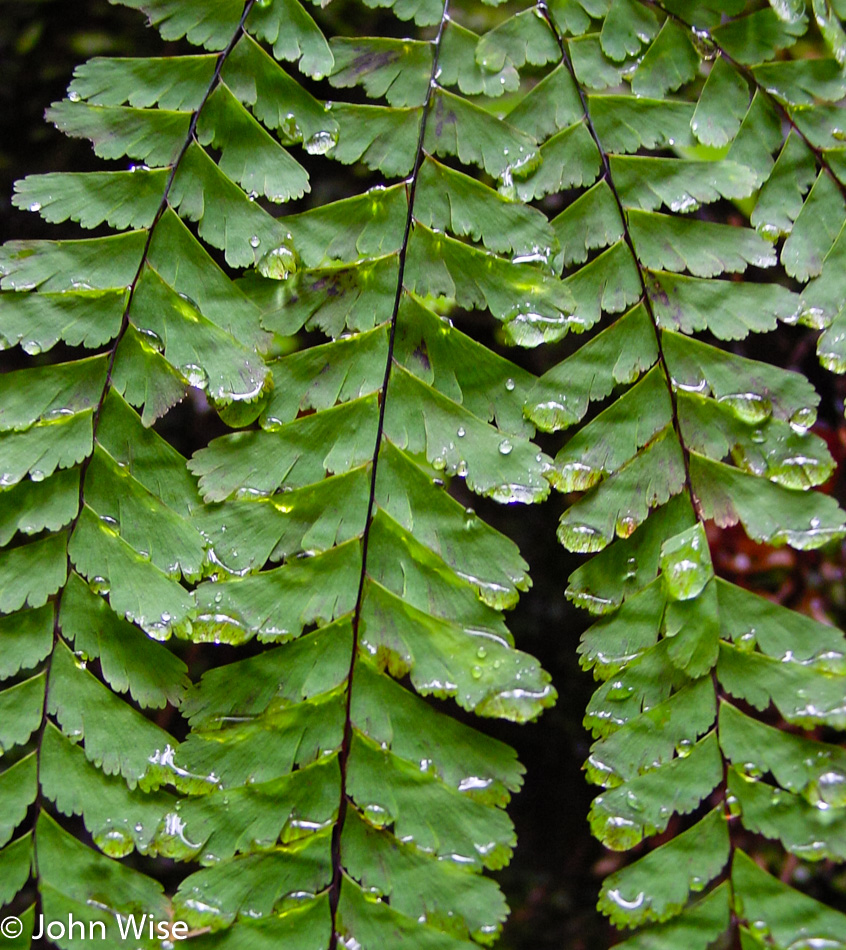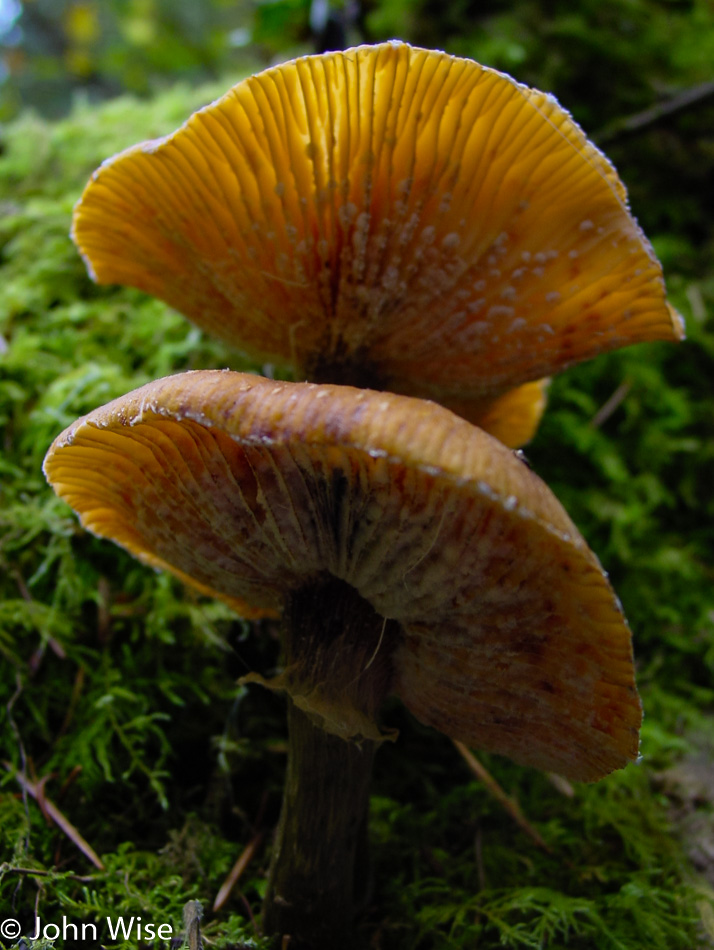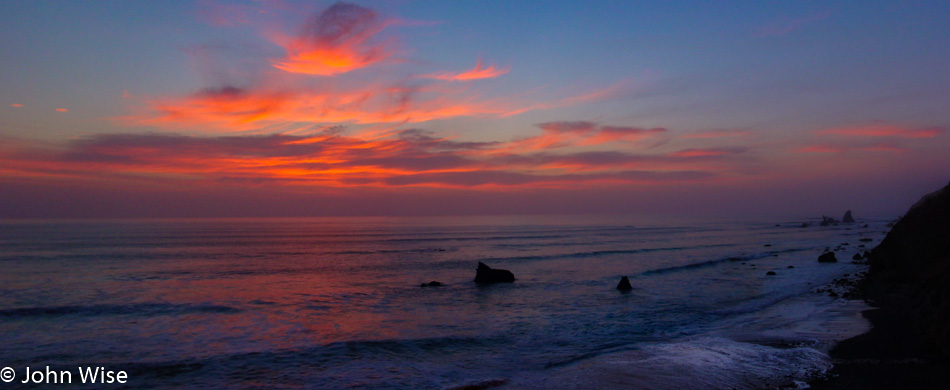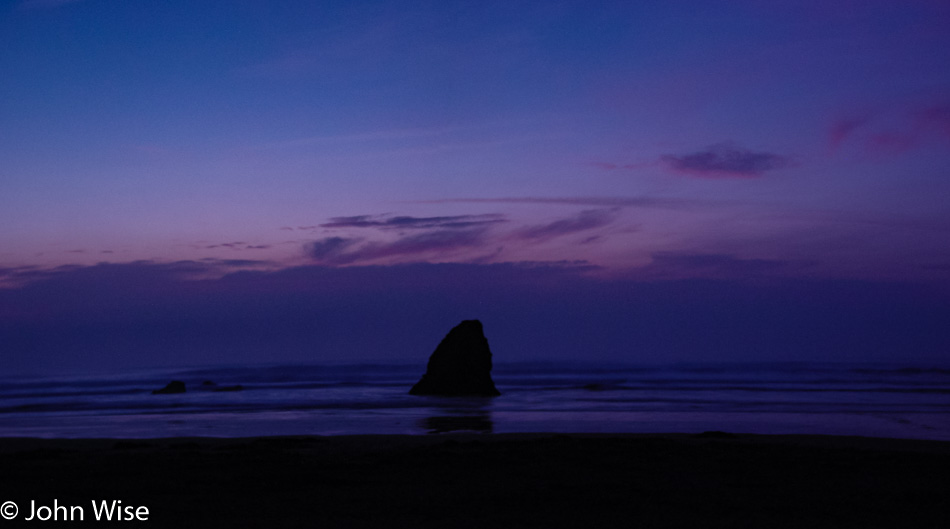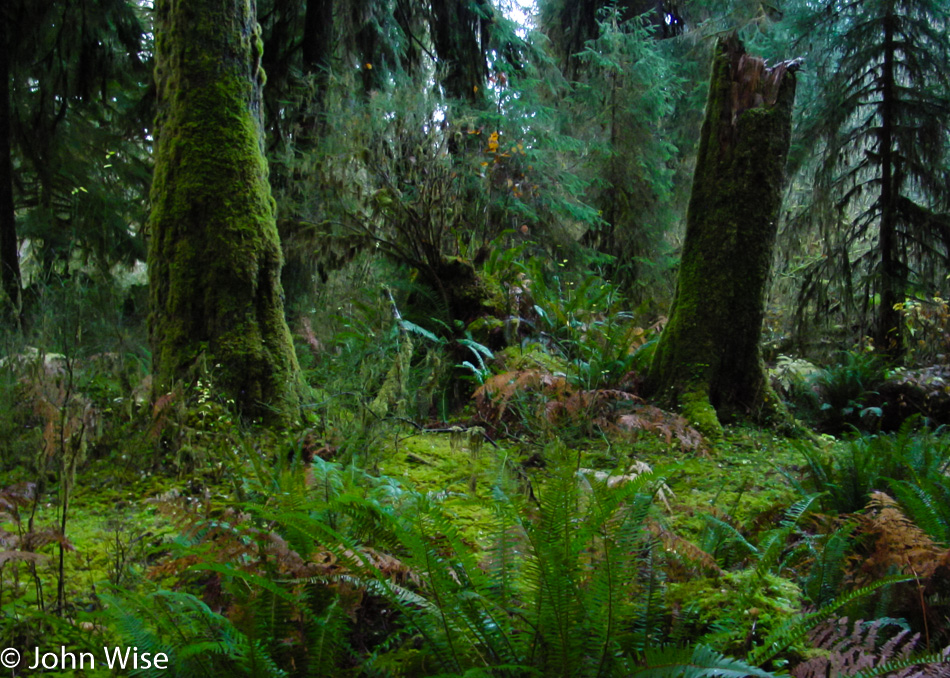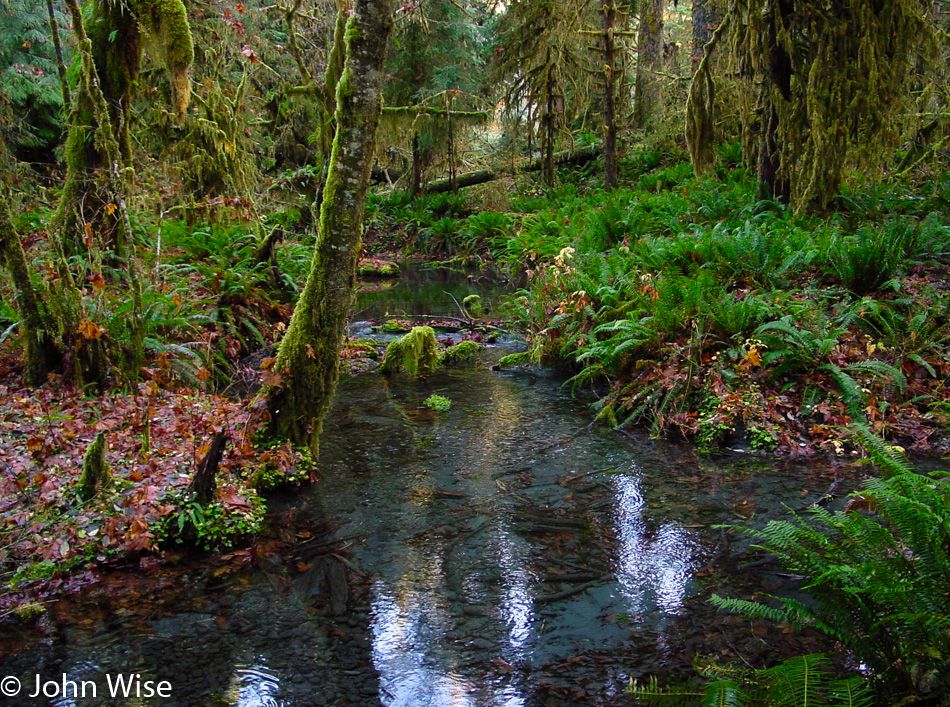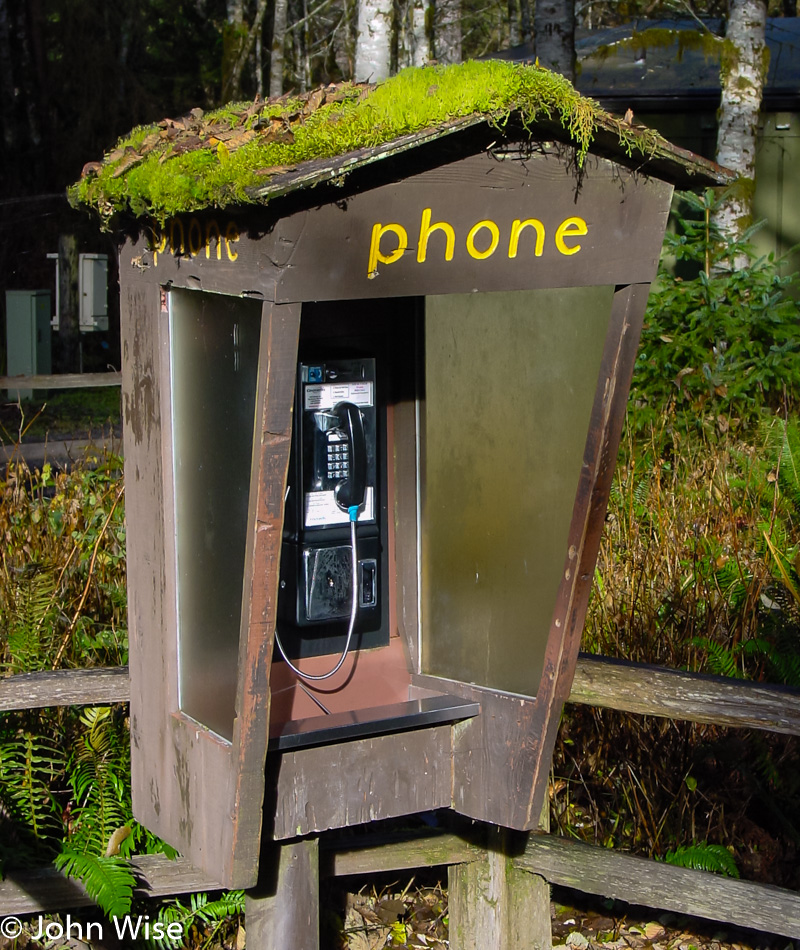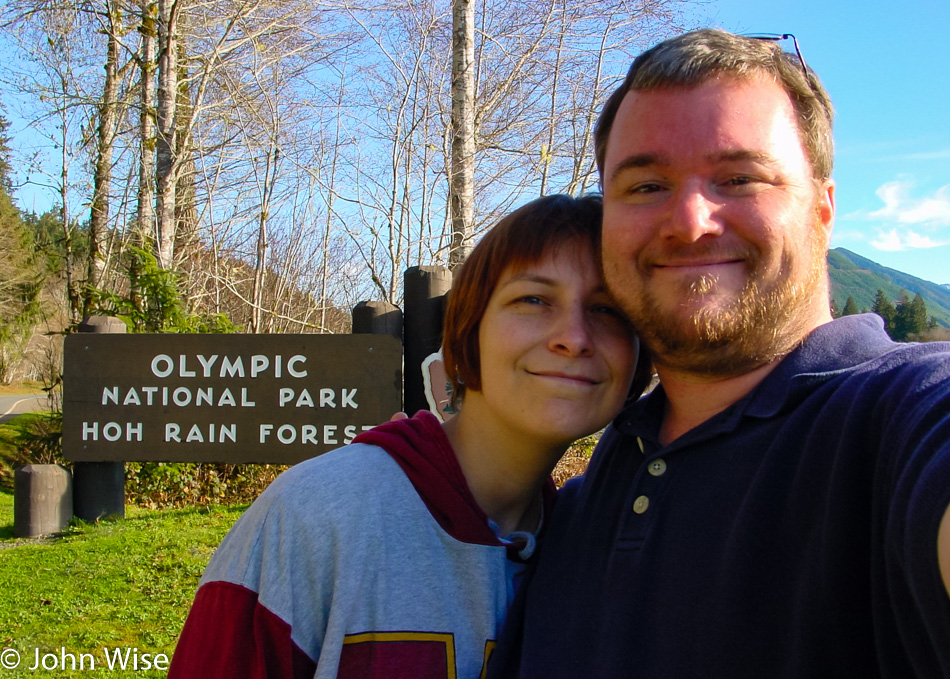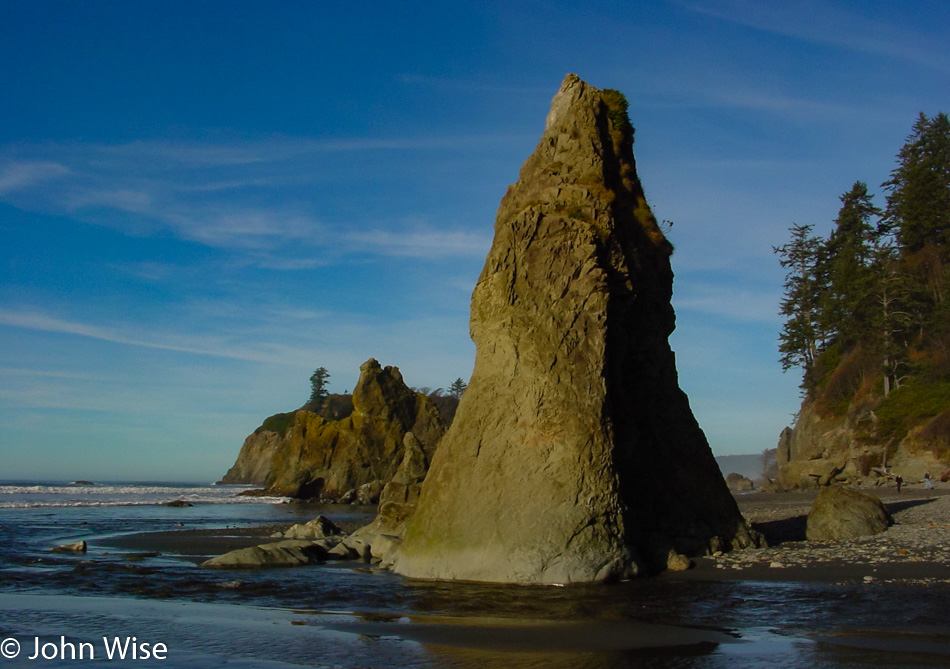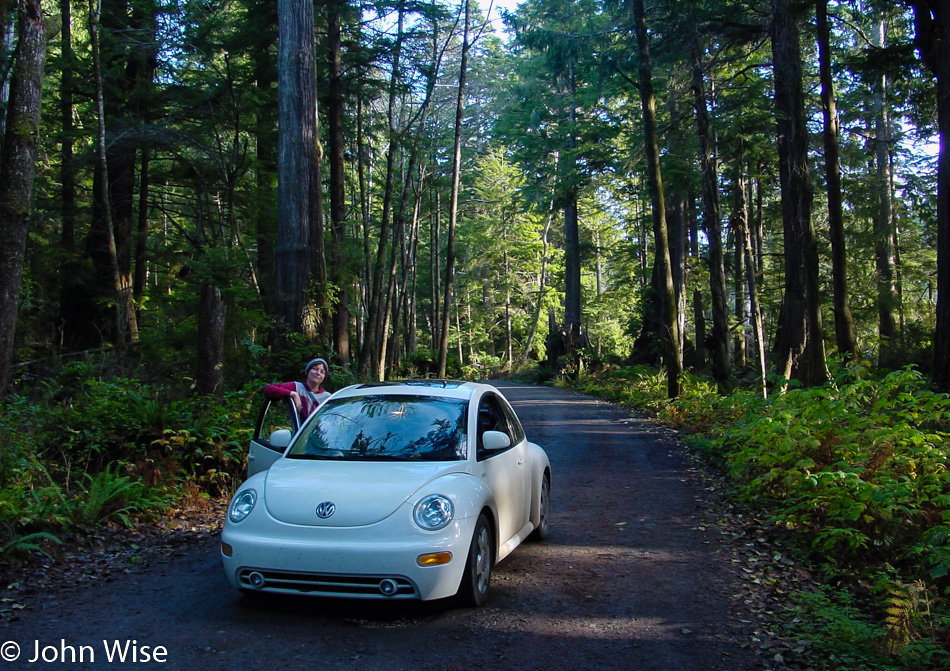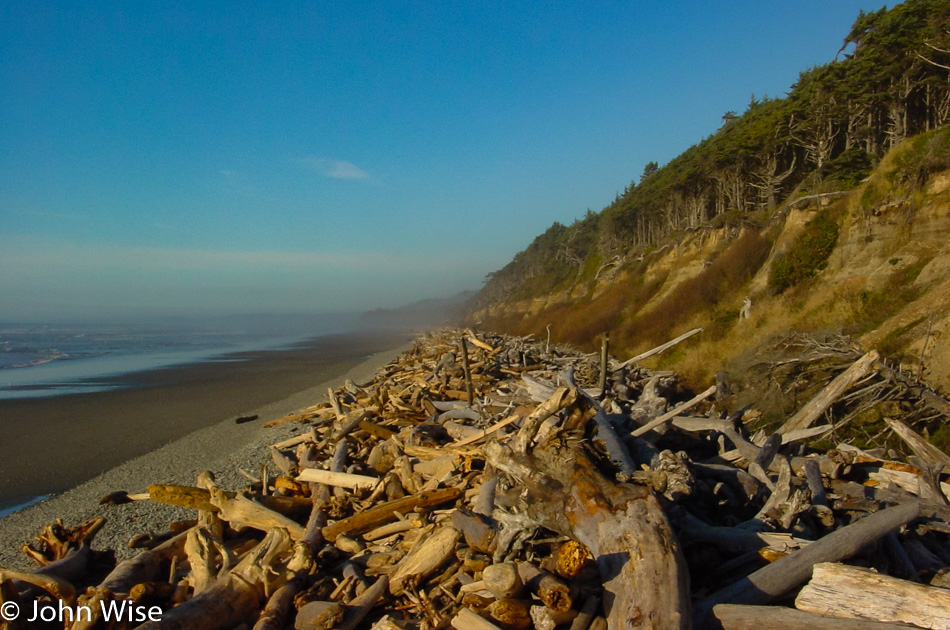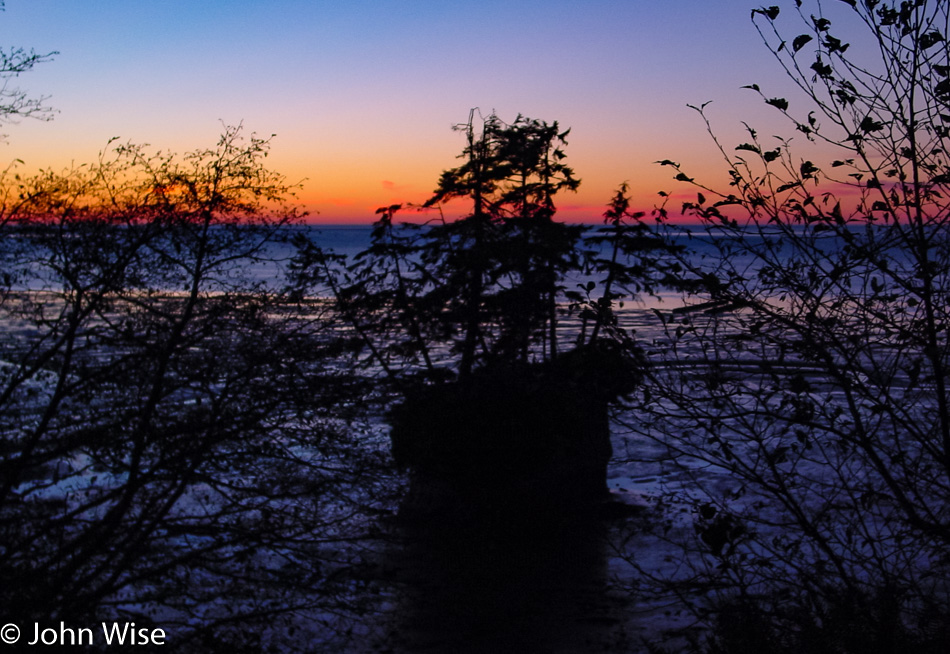
It never fails that getting away from a major freeway allows us to see the world change in dramatic and beautiful ways. We are well outside of El Paso now; as a matter of fact, we entered Texas at 6:00 this morning. By the time we stopped for this photo of the pony in the rising sun, we were on the US-90.

Good thing we have our ice chest with us because eating here at the old HiWay Cafe is now out of the question.
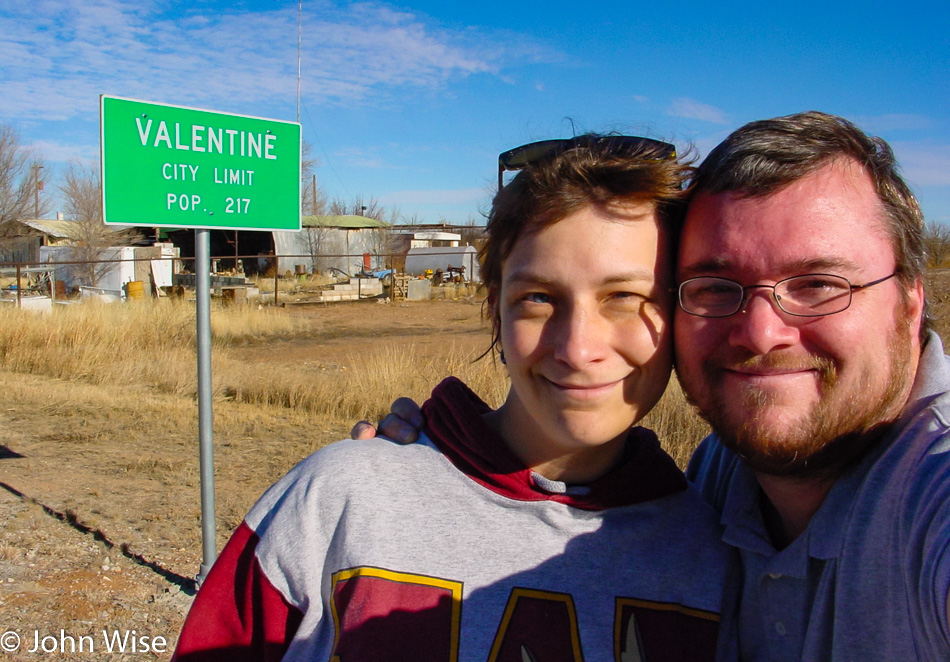
Well, no wonder the cafe had problems staying in business; the town of Valentine, where it’s at has a population of only 217.
Update: As of 2016, the population has dwindled to only 125 residents. By 2023, it was 73.

Welcome to Marfa! I’d already known the name of this town from a stint in drug/alcohol rehab I did back in 1983 (I think that was the year). By some freak chance, I ended up in a hospital in Century City, California, across the street from the Twin Towers as they were known (used for the exterior shots of the TV series L.A. Law), and after I’d been there about a week some homeless guy was brought in by a taxi driver who told the people that greeted this transient that he’d been on the floor of the taxi tripping out about the threat of being shot on his way in.
More than a few of us wondered why they allowed the heavily bearded old guy in this place on the edge of Beverly Hills. Over the next days, I’d walk by his room, and on one occasion I heard him listening to Kraftwerk, which at the time seemed kind of out of the ordinary. Another time, I caught the Screamers and thought, “NO WAY!” I was 20 years old and had been deep into the Los Angeles punk scene, and this dude was just too old for punk; he was probably about 50. Yeah, one more time strolling by, except this time, I thought I was hearing Devo’s rumored but unreleased Muzak recordings. I had to stop in and ask.
The guy had told me that the Screamers had recently played at his birthday party. I was incredulous. Regarding Devo, I was correct, and he told me that Mark Mothersbaugh was his friend. “So, who are you?” He answers me with another question, “Have you ever seen the film Giant with James Dean?” My answer was no, as I loved horror and sci-fi growing up. “Well, what about the film Easy Rider?” I excused myself, explaining I was a punk/industrial kind of person and that the hippy stuff of the late ’60s was more my dad’s generation than mine. “What about Apocalypse Now?” With that, he struck a nerve: he was the crazy photographer! I had just met Dennis Hopper. The old guy taught me a lot over the next couple of weeks, including planting the seed of taking an interest in his film career that early on took him to Marfa, Texas, where he was featured in the film Giant with James Dean and Elizabeth Taylor.
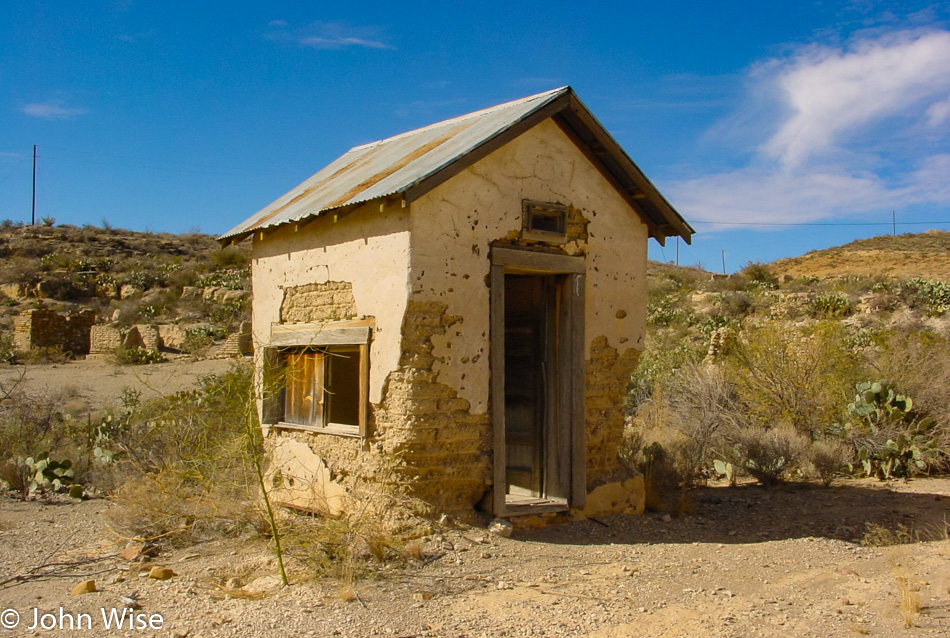
Out of Marfa and onto US-67 heading for the Mexican border. Along the way, we passed through the Shafter Ghost Town; not many ghosts, but many ruins remain, although they are fading from the sun and wind that constantly gnaw at their existence.
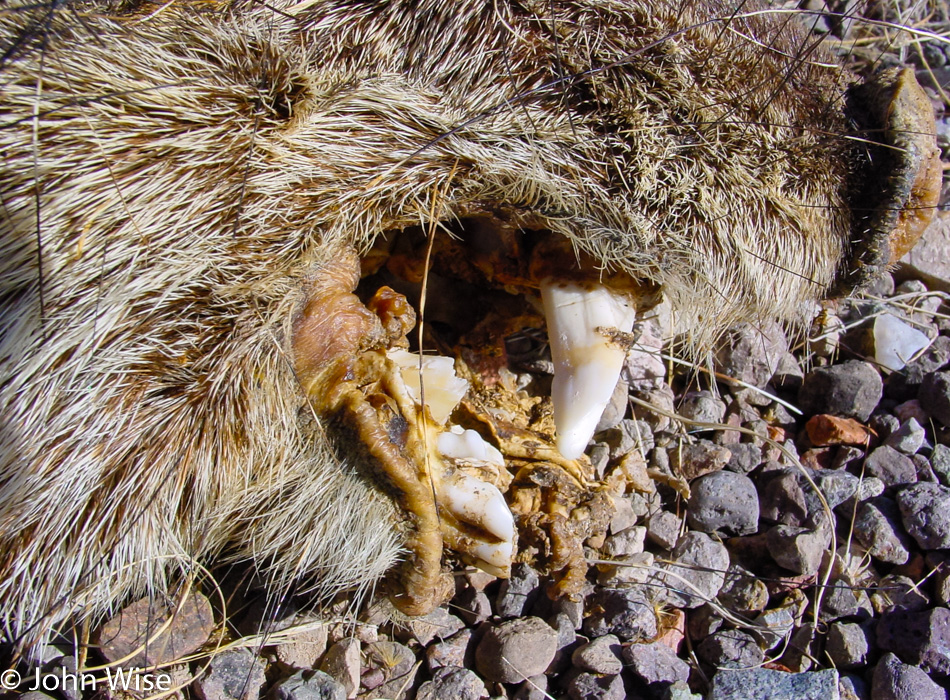
This old javelina didn’t make it out of town and was lying here drying out like the rest of everything that passes through. Looking back, I should have grabbed one of those fangs for a pendant, though I guess that practice was reserved for those who took the animal’s life.
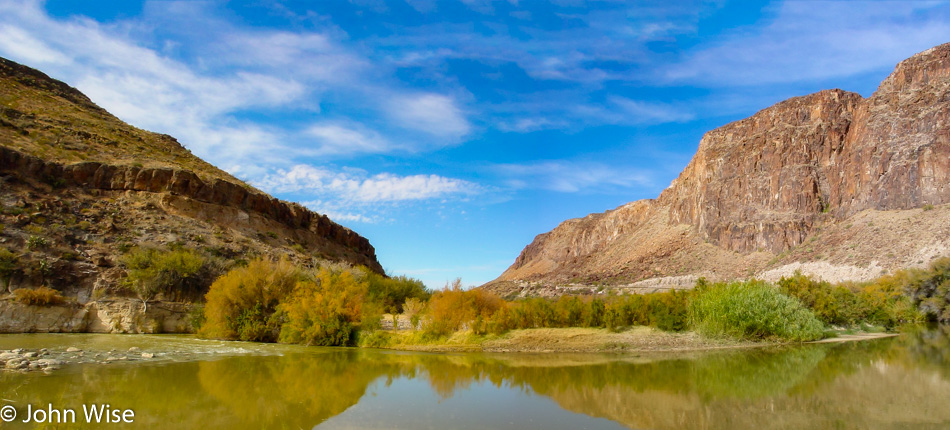
Entering a familiar-looking country reminiscent of Arizona. Strange to think that we’re in America, but just a stone’s throw across the river is Mexico. We tried visiting Fort Leaton State Historic Site in Presidio, but it was locked up tight, the first place to put on the list of places to come back to.
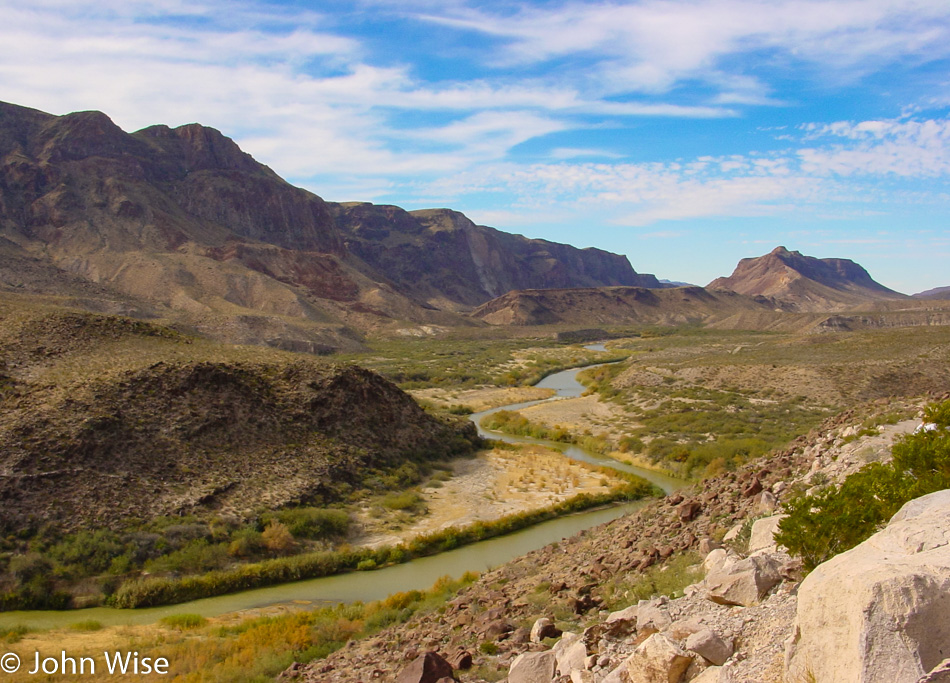
How this “stream” got named the Grand or Big River is beyond me, but this slice between Mexico and the United States is the famous Rio Grande, sometimes known as Rio Bravo. It’s really true what Will Rogers once said about it, “The only river I know of that is in need of irrigating.”
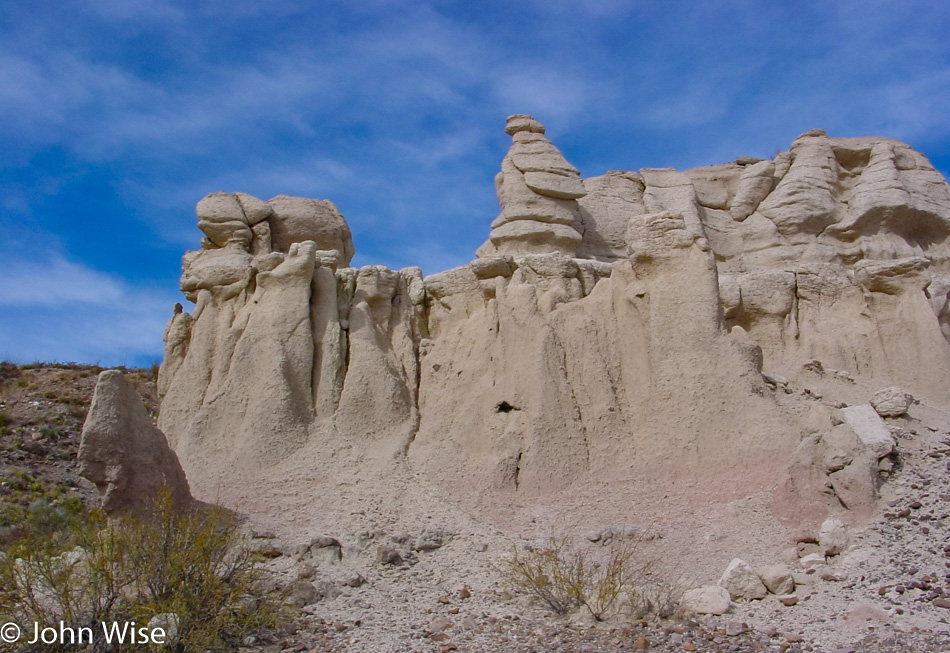
Hoodoos in Texas, who knew?
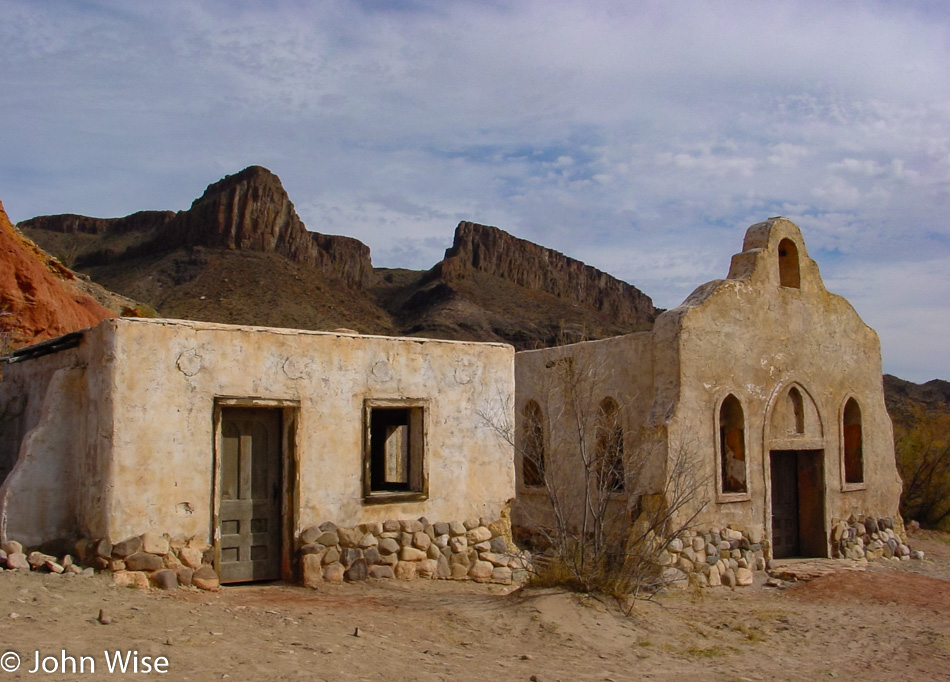
Back in the day, maybe John Wayne and Clint Eastwood visited these places, but today, there are very few people wandering around and even fewer living out here. The truth is more mundane, with this place called Contrabando having been built in 1985 for a Roy Clark film titled Uphill All The Way.
Update: A flood six years after we visited caused serious damage, and by 2015, most of the buildings were removed.
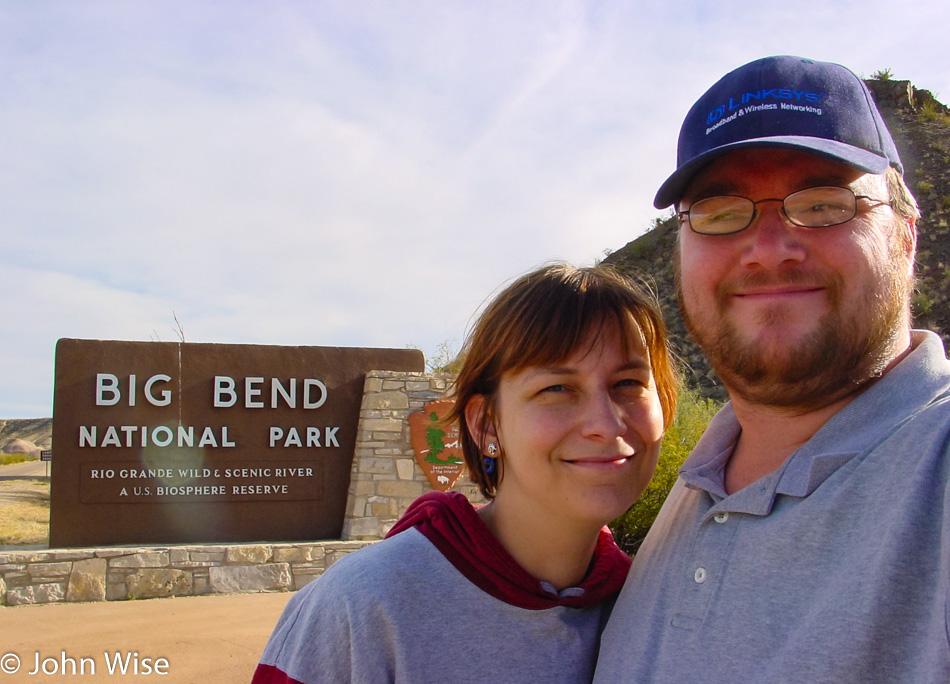
This National Park right here is the primary reason for our visit to our southern border in deep Texas. Big Bend seemed like a remote enough corner that might not be too busy on Christmas day, and so here we are.
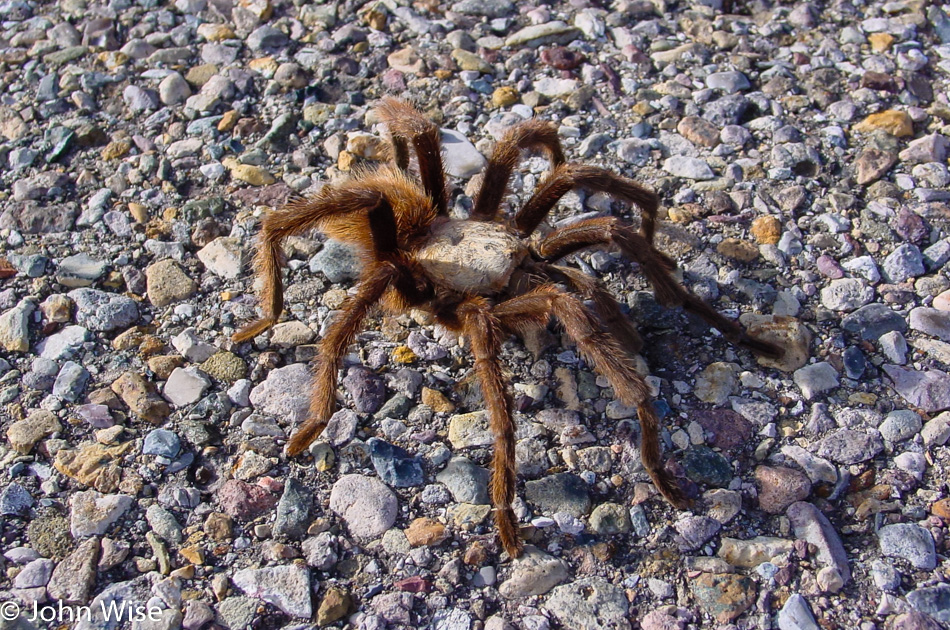
Just us and the tarantulas. Well, there are probably some snakes, scorpions, bats, coyotes, and a few javelinas roaming around too.
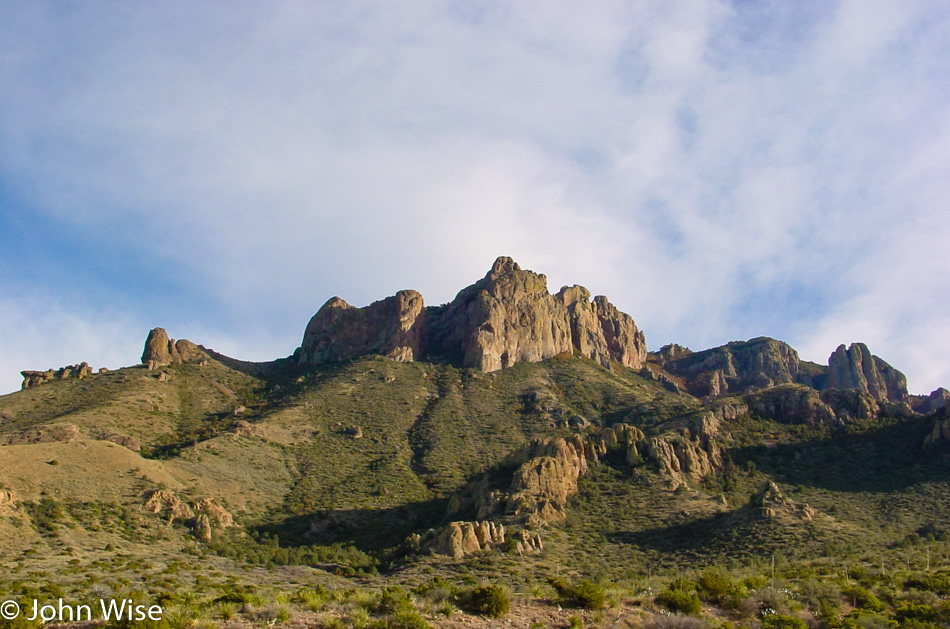
With a loose framework identified for this road trip, you can bet we don’t have much time to explore the longer trails that might show us some of the more off-the-beaten-path locations. We’ll just add Big Bend to the list of places we’d like to return to.
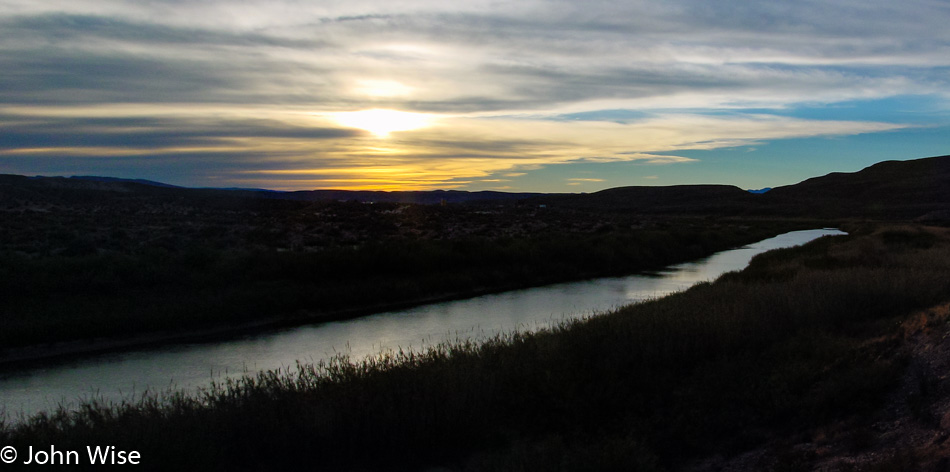
On our way to the park, we had stopped in Terlingua to check into the Longhorn Ranch Motel and RV Park to ensure we had a room for the night else we would have had to leave the area early and head up to Alpine, Texas, on the US-90 for our overnight. With plenty of time now available, we were able to take a hike out along the Rio Grande and enjoy the sunset. We can report that in our entire time along the river from Presidio to Lajita for nearly 50 miles and then again here in the park, we never once encountered the hordes of immigrants racing across the border that so many people up north fear. Matter of fact, in talking with some locals, they said the border issue is grossly overblown and that for hundreds of years, people have been going back and forth across this border for work and family without issue. Sadly that lack of hysteria doesn’t sell well to idiots who feel that the potentially shitty jobs that immigrants often take are under threat.

Caroline is dipping her feet in the Rio Grande near Santa Elena Canyon. She would have walked in, but how would it have looked if, at that moment, an official or border agent had seen her walking out of the Rio Grande coming from the direction of Mexico, which is just 30 feet away? What we did see in Mexico were a few wild donkeys yay, wildlife!
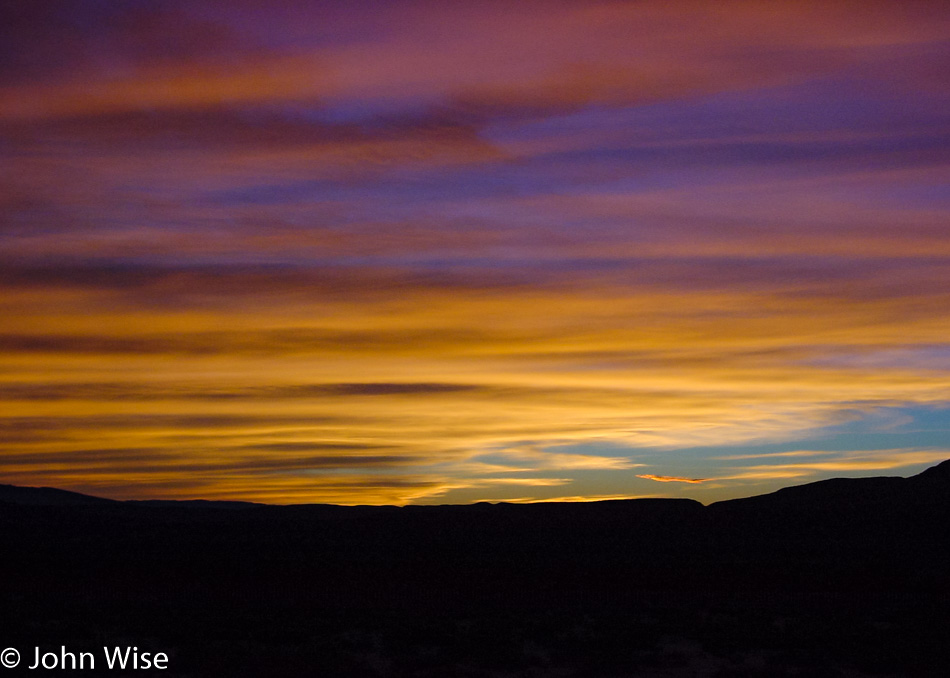
I have to wonder which side is Mexican sunset and which side is American sunset and if they have to have papers to cross borders. Merry Christmas, everyone.

